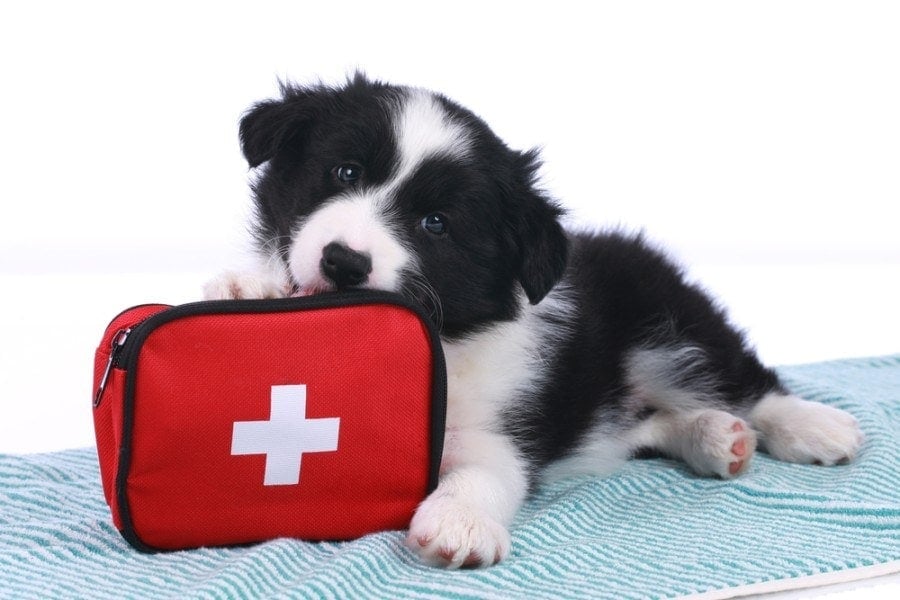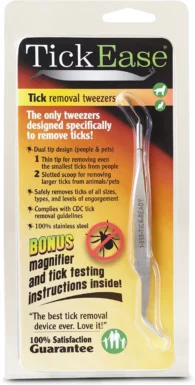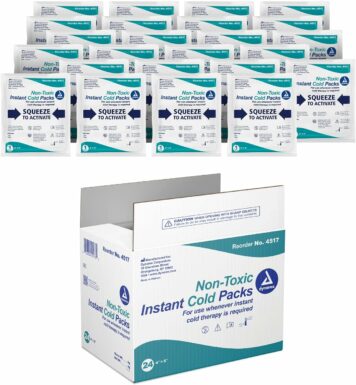17 Essential Dog First Aid Kit Supplies & Products: 2024 Guide (Vet Answer)

Updated on

Click to Skip Ahead
One of the best parts of sharing our lives with pets is being able to include them in fun activities. This is particularly true when it comes to our dogs. If we’re doing something, they want to be doing it too.
When it comes to planning a trip away, whether it be for a day of hiking or a camping trip, it’s important to always be prepared for any eventuality. For most people, this will include some basic first aid supplies in case of any mishaps along the way. Many people keep a small first aid kit in their car or backpack for minor scrapes or cuts for themselves, but what about for your dog?
In most cases, if your dog is injured or becomes ill, your first call will be to your vet. But what about when we can’t get to the vet right away?
In the following article, we’ll address some of the most common injuries your dog might encounter when out and about, and how to prepare a travel first aid kit for them.
What Could Go Wrong?
To make sure your first aid kit has everything you need, let’s take a look at the most common problems you might encounter when out and about with your dog:
- Cuts, wounds, and lacerations—often on limbs and paws
- Injured/painful/broken limbs
- Stings, bites, and thorns, from insects/spiders/plants/snakes
- Something in the eye
The 17 Essential Dog First Aid Kit Supplies & Products
There are pre-packed first aid kits available to buy, and these are perfectly fine. But if you want to have a personalized kit that you have put together yourself, you’ve come to the right place. The following list is by no means exhaustive, but we also don’t want to have to bring a packhorse just to carry the first aid kit.
1. Non-adhesive Dressings
- Our Pick: Medpride Sterile Non-Adherent Pads
Non-adhesive dressings like these are essential when bandaging wounds. They allow you to cover a cut, bite, or scratch with a clean dressing that won’t stick to the wound itself. They usually have a shiny film on either side, but if you have a dressing with a shiny layer on only one side, place this against the wound. These dressings absorb moisture, keeping the wound clean.
2. Adhesive Bandage Tape
- Our Pick: 3M Micropore Paper Tape
As you can imagine, it’s not always easy to get dressings and bandages to stick to fur! Adhesive bandage tape like this option sticks well to skin, fur, and other bandaging materials. This can be really helpful if you’re trying to hold a non-adhesive dressing in place or to help secure the bandage when you’re finished. It doesn’t tend to pull at the fur and is easy to remove later.
3. Cotton Padded Bandage
- Our Pick: 12 Rolls Cast Padding Individual Pack
Cotton padded bandage is used as a supportive and absorbent layer when bandaging a wound but is also useful for reducing the movement of an injured joint or fractured bone. We would recommend having at least two rolls with you in case extra padding or support is needed.
4. Conforming Gauze
- Our Pick: Non-Sterile Conforming Stretch Gauze
Used on its own or over the top of the cotton-padded layer, conforming stretch gauze is a breathable bandage material that can be used to keep dressings and bandages in place.
5. Flexible Stretch Bandage
If you’ve ever had horses, you’ll be very familiar with VetRap, which is a brand of Flexible stretch bandage. This multipurpose bandage is great as an outer layer for bandages, and because it sticks to itself, it acts as both a protective layer and a method of securing your bandage in place. Although it’s not waterproof, it does provide some protection to the layers underneath. It is very stretchy, so is ideal for pressure bandages, but you must be careful not to apply them too tightly, as they can cut off circulation.
6. Sterile Saline Pods
- Our Pick: MedFet Sterile Saline Pods
These sterile saline 0.9% pods are an absolute must-have for any first aid kit. They are ideal for flushing and cleaning wounds. And, being the same salinity as tears, are ideal for flushing eyes as well. Being single-use ampoules, they aren’t the most eco-friendly but are much safer to use in eyes and wounds than multi-use bottles that could become contaminated once opened. Be sure to keep an eye on the expiration date.
7. Cotton Wool
- Our Pick: INTRINSICS 100% Cotton Roll
Cotton balls or rounds are useful too, but rolls like these are great because you can use them as a really thick absorptive layer when needed, or just tear off sizes that you need. A whole roll is a bit much to carry around, but we would recommend folding up a section and packing it in your travel kit.
8. Wound Spray
Wound spray like this one from Veterycin is ideal for minor grazes, cuts, stings, or bites. It helps soothe the skin and help slow down infection until you can get your dog to the vet. Its small size (3 fluid ounces) makes it ideal for a travel first aid kit.
9. Styptic Powder
- Our Pick: Vet Worthy Styptic Powder for Dogs
Used by the military and emergency services for years, styptic powder is a safe way to stop bleeding. It is also available as styptic pencils, which are less messy than powder but only really useful for tiny scratches and bleeding nails.
10. Soft Muzzle
A dog may bite if they are scared or in pain, even dogs that have never shown the slightest hint of aggression. If you need to tend to a painful injury, it is often safest to use a muzzle, just in case. It keeps you safe and allows you to focus on the task at hand. A soft muzzle like this one folds down nicely into a travel first aid kit, and being a breathable mesh, it is more comfortable for your dog.
11. Tweezers
- Our Pick: TickEase Tick Removal Tweezer Tool
Handy for removing thorns and splinters, these are a must in any first aid kit. This handy little device from TickEase is doubly useful—tweezers at one end and a tick remover at the other!
12. Compact Towel
- Our Pick: SYOURSELF Camping Towel
If your adventurous dog decides to take an unscheduled dip, it’s usually not a problem. But if they have ventured into some icy cold water, you need to get them dry pronto. Camping towels are a great option to keep with you. They are super absorbent and take up very little space in your pack, until you use them, of course!
13. Blunt-nosed Scissors
- Our Pick: Pet Magasin Dog & Cat Grooming Scissors
A basic pair of sharp scissors is a must, but play it safe by purchasing ones with a blunt end. These scissors from Magasin come in a pack of two different sizes, which is ideal for both your travel and home first aid kits. Designed for grooming (pets and humans!), they are useful for cutting bandages or trimming out thorns and brambles stuck in fur.
14. Instant Cold Pack
- Our Pick: Dynarex Instant Cold Packs with Urea
These are really handy when you need to apply a cool compress to an injury to bring down swelling. They are activated by squeezing the pack and become cool after 30 seconds. These cold packs from Dynarex Instant Cold Packs with Urea are a little more expensive, but they use urea as the active chemical, which is non-toxic.
At 5” x 4”, these instant cold packs are small enough to fit into a travel kit but large enough to be useful. Just make sure your dog doesn’t chew them. Although the contents are not toxic to dogs, they will likely cause gastrointestinal upset if swallowed.
15. Any Regular Medications
- Our Pick: Small Travel Pill Organizer with Labels
Whether it’s an overnight stay or a long holiday, make sure you have your pet’s medications with you! Compact pill organizers like these are great for travel—they’re tiny!
16. Rubbish Bags
- Our Pick: Earth Rated Dog Poop Bags
You don’t want to leave behind any wrappers or trash, so keep a couple of small rubbish bags in your kit so you have somewhere to store the mess you make. Poo bags work just fine!
17. Container for Your Kit
- Our Pick: Paw Print Lunch Bag Reusable
You’ve got all the equipment, so you’re going to need something to keep it in! A Paw Print Lunch Bag Reusable like this is ideal. It’s insulated, has enough room for everything you need, opens up so you can see everything inside, and is adorable!
This might seem like a lot of things to carry with you on a hike, but everything on the list is very small and light and should fit nicely in something the size of a child’s lunchbox. If you keep a larger first aid kit in the car, you’ll always have a good supply of everything you need and can just take a smaller one with you when you’re out on foot.
Don’t forget to keep the contact phone numbers of your vet/emergency vet handy. If you are far from home, look up the number of a local veterinary practice to save precious time if needed.
What to Do in an Emergency
Now that we’ve got our fully stocked first aid kit, what do we do with it?
The answer to this question is very much dependent on the sort of emergency we are dealing with, but there are some tips for treating some commonly encountered injuries. In most cases, your dog will still require veterinary attention as soon as possible, but these tips can help you provide first aid until you can get to your vet.
Be aware that even the most placid dog can become aggressive when scared or in pain, so the first step in providing first aid is to make sure you are safe, which is why a muzzle is a useful item to keep in your first aid kit. You don’t want to end up with two patients!

1. Cuts or Wounds
- Use sterile saline to flush any dirt or debris.
- Apply a non-adhesive dressing over the wound and use the padded cotton bandage to secure it in place.
- Do not wrap the bandage too tightly.
- Apply a layer of the conforming bandage over the top, slightly firmer than the padded layer.
- Use the flexible stretch bandage to hold everything in place.
IMPORTANT: This type of bandage is easy to pull too tightly and can become tighter over time. It is best to pre-stretch the bandage before you apply it and make sure you are not pulling it tightly as you put it on. The only exception to this rule is if the wound is actively bleeding, in which case, pressure is important, but a firm pressure bandage should not be left on for more than 4 hours.
2. Snake Bites
- Stay calm
- Make sure everyone is safe
- Try to identify/photograph the snake if you can do so safely
- Rinse the bite with water or saline, but do not rub it
- If the bite is on a limb, place a non-adhesive dressing over the bite wound and bandage the entire limb firmly to minimize movement of the limb until you can reach help
- Try to keep the bitten area lower than the level of the heart (if practical)
- Panic
- Try to suck the venom out
- Try to kill the snake
- Apply an ice pack or tourniquet
- Elevate the bitten area
3. Something in the Eye
- Use the sterile saline solution to flush the eyes as much as possible.
- Try to keep your dog’s head facing down while you are flushing the eyes to encourage any dirt/dust/contaminants to drain out of the eyes.
4. Injured/Broken Limbs
- The aim here is to minimize movement of the limb, so the more layers of bandaging we can apply, the better.
- As with the wound bandaging above, start with the padded cotton bandage, applying as thick a layer as your supply will allow. Follow this with the conforming gauze, increasing the firmness as you apply it, remembering not to pull the bandage too tight, and finishing with a layer of the flexible stretch bandage.
- Do not attempt to splint a fractured limb, as you may end up causing more damage or discomfort
- For minor injuries, the instant cold packs work well to help relieve pain and swelling, but be careful to make sure your dog doesn’t chew or eat them!
Can I Give My Dog Human Medication?
There are some safe doses of some human medications that can be given to dogs in an emergency, but extreme caution needs to be taken.
Acetaminophen for pain and inflammation is an option, as is chlorpheniramine for allergic reactions. However, never give your dog any medication without speaking to your vet.
Each dog is different, and some medications will not be suitable for them. Most importantly, many human drugs are extremely dangerous for dogs.
If you want to keep some emergency medications in your doggy first aid kit, talk to your vet about safe options and doses for your dog first.

Conclusion
It is quite normal to have a first aid kit at home and common for people to take one with them on hikes or long trips. If we are bringing our dogs along for the ride, we should also make sure we provide for them too.
It’s a great idea to have a larger, fully equipped first aid kit for your dog at home or in your car, with a smaller one to take when out walking. Most of the time, that first aid kit will just be taking up space that could be used for sandwiches, but when that accident happens, you’ll be glad to have it.
If your dog is injured, your first port of call should always be the vet, but in an emergency situation or when professional help is far away, a first aid kit could save a life.
Related Read:
- Rattlesnake Bites in Dogs: Vet-Explained Prevention, Treatment & Emergency Care
- Dog Bit by Copperhead Snake? Our Vet Explains What To Do
Featured Image Credit: absolutimages, Shutterstock
































